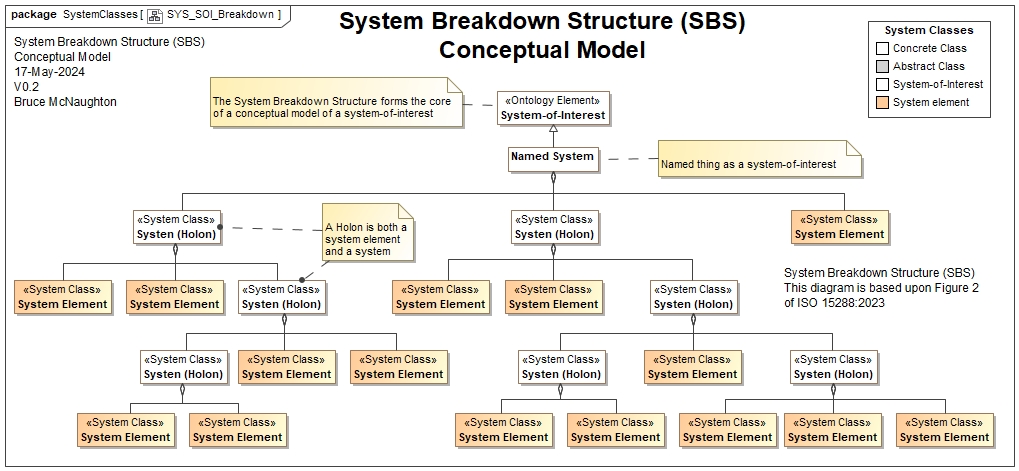Create a System Description for a System-of-Interest
Create a System Description for any system-of-interest
Once the SysDesc ADF is available, a System Description can be created for any system-of-interest using the SysDesc ADF. This System Description provides coherent and consistent views of the system which can then be used to:
-
build a shared understanding of the system-of-interest across the set of stakeholders
-
establish a common language for describing the system-of-interest
-
classify the system-of-interest in a wider classification framework based upon a base classifier of the system-of-interest
-
identify areas from other system descriptions that can be reused or refined to achieve consistency across a wider set of systems
-
use in the creation of an Architecture Description Framework for this class of systems
The following are the steps to create a System Description:
NOTE: The viewpoint provides the instructions for creating a view. These tend to be linked directly from the header in the template.
-
Identify the system-of-interest for the System Description
-
Create or use a template with the headers pointing back to the viewpoints in the SysDesc ADF.
-
Identify the stakeholders and their concerns View
-
Identify the name and class View for the system-of-interest
-
Identify the purpose of the system-of-interest
-
Identify the environment (Context) View for the system-of-interest
-
The next three views and two sections may be created throughout the entire process incrementally:
-
The System Properties View
-
The Structure (Pattern of Organization) View
-
Generally in the form of a System Breakdown Structure (e.g. Figure 2 ISO 15288:2015) (see below)
-
-
The Behavior (Structural Changes) View
-
Correspondences
-
Decision and Rationale
-
Note: Templates for Correspondence, Correspondence Method, Decision and Rationale may need to be created or already exist ready for use.
-
One way to create this System Description is to get the stakeholders together using workshops to talk about the interests and concerns the stakeholders have in the area of the view and begin to structure the information in the view. The views may start as rough bullets or even rough models and then can be refined as more is learned. The more conversations the team has the better. Each conversation is creating a learning alignment around the contents of the system description.
NOTE: Some existing system descriptions may be important as both an example and learning opportunity and for connections to reuse patterns, ontology elements, etc.
System Breakdown Structure
The System Breakdown Structure (SBS) is a way to identify the structure of the system-of-interest and establish common terminology (ontology elements).
The System Breakdown Structure has the following pattern:

This pattern contains a simple pattern representing the abstract system definition that the system-of-interest and each holon has inherited. This pattern provides a way to capture the elements in a system-of-interest and identify related items. These types of holons may be mixes of living systems and designed physical and abstract systems.
Correspondences
Correspondences can also be created or used to establish relationships across the various Architecture Description Elements. The SysDesc ADF Correspondence Section provides the primary source for finding existing correspondences and correspondence methods. The existing correspondences should be checked and if appropriate correspondences are found, these should be used before creating new correspondences and correspondence methods. These correspondences can also be used to connect across the systems within a System Breakdown Structure and across System Breakdown Structures in other systems (or related system descriptions).
Link to the SysDesc ADF Correspondences
Decisions and Rationale
Decisions and rationale provide a log of significant learning and changes to the System Description
These entries should be as close to the decision point or learning event as possible.
Context and Use of the System Description.
The context and use within ISO 15288:2015 may also be important. There may be System Descriptions that are created during the early life cycle processes that do not have a corresponding SoI ADF. These system descriptions do focus the stakeholders relevant to this system and provide a common ontology and understanding in the context of the whole system-of-interest. This type of system description may be for a holon in the System Breakdown Structure. As an example, the Enterprise has one SoI ADF and multiple system descriptions within the System Breakdown Structure.